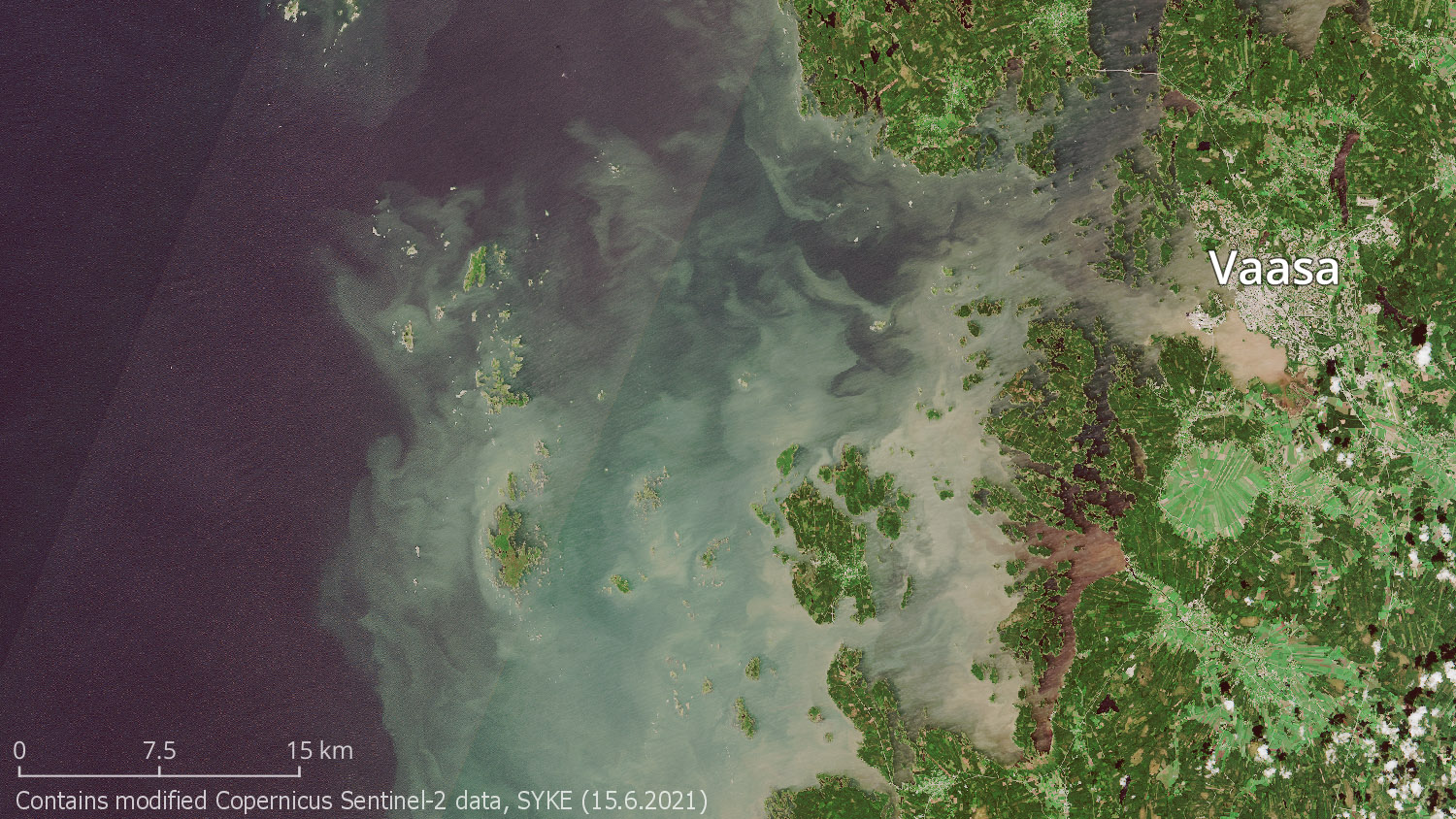The water look greenish. Is it cyanobacteria?
The water look greenish. Is it cyanobacteria?
Often it is, but: the greenish shade of water is not always due to cyanobacteria or other algae.
The reason for the greenish color of the water can be, for example, one of the following:
turbid water deposited in water layers below the surface,
visibility of benthic vegetation through water in shallow areas,
pollen in the water,
snow or ice mixed with water,
decomposition products of dead algae mixed with water,
cyanobacteria or other algae in water.
Without expertise, it may be difficult to interpret the causes for the greenish hue of the water. At the bottom of the page there are examples of cases where the water appears to turn green due to various reasons.
Please also note that it is not possible to make algal species determinations based on the data in the Tarkka service. Depending on the season, several species of algae occur in Finnish waters. More detailed information on the observed algae species can be found on Syke’s algae status pages and waterinfo.fi
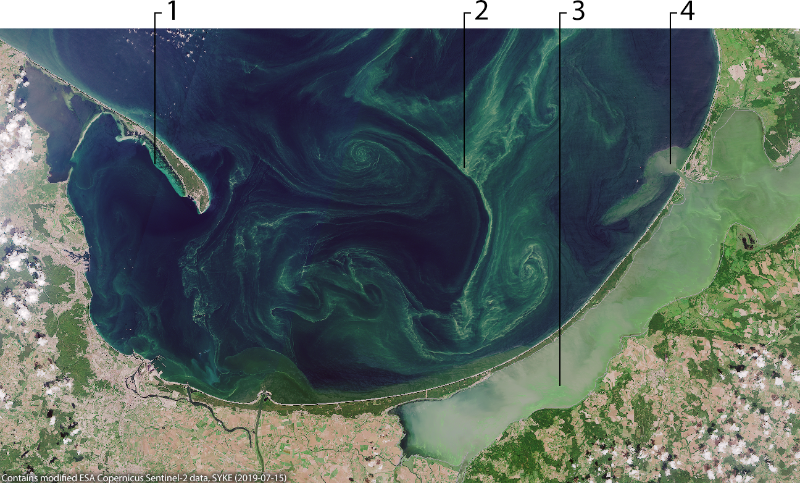
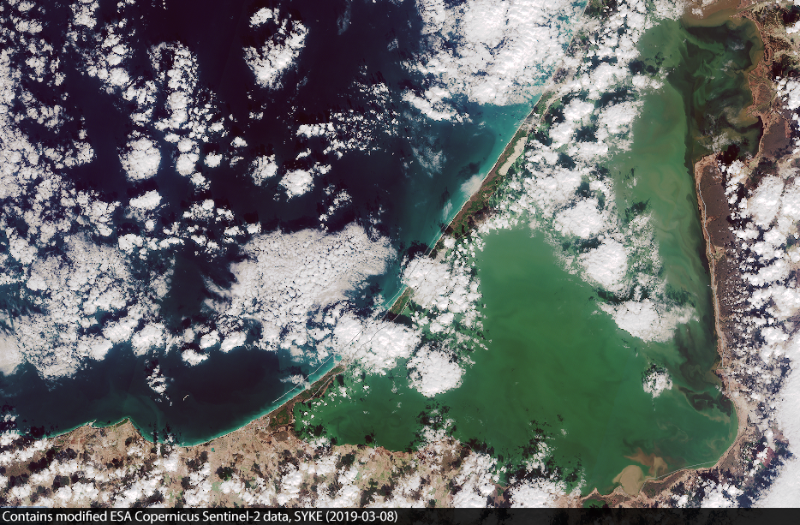
Examples
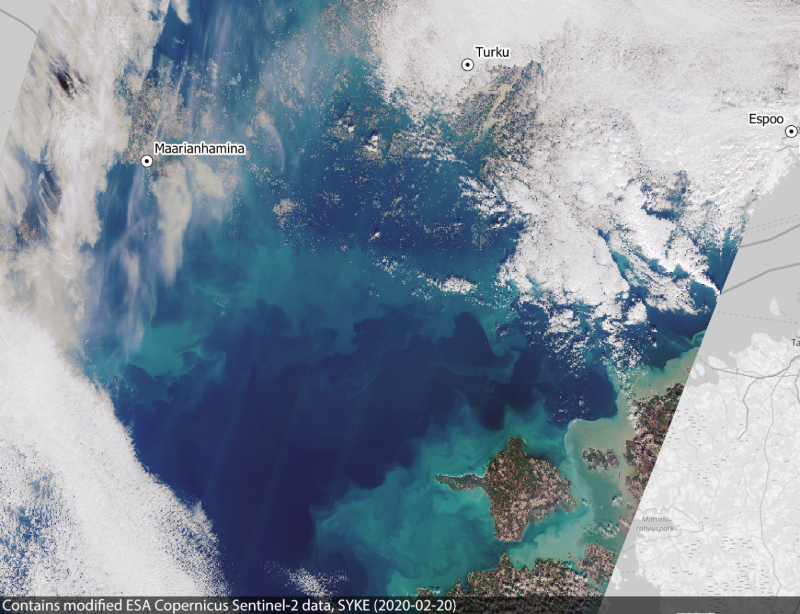
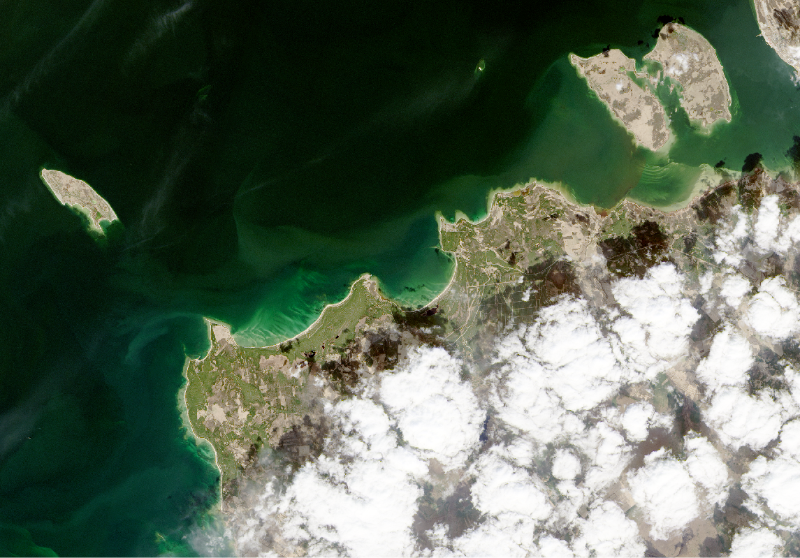
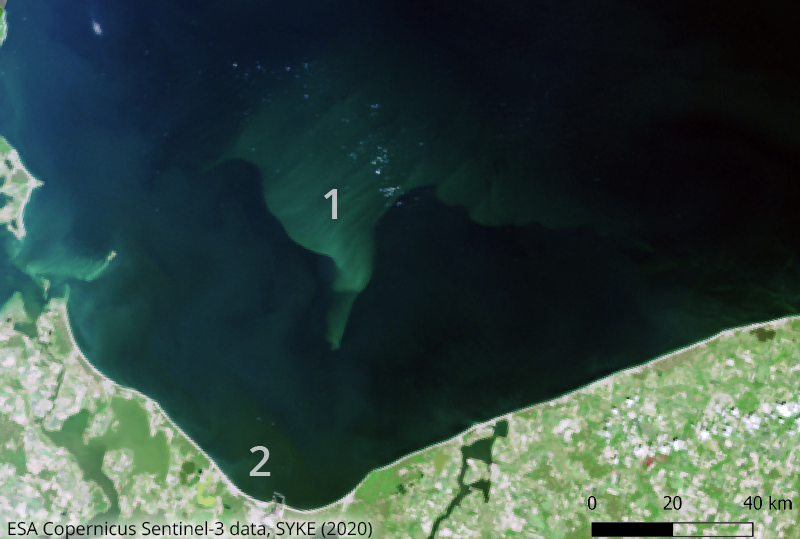
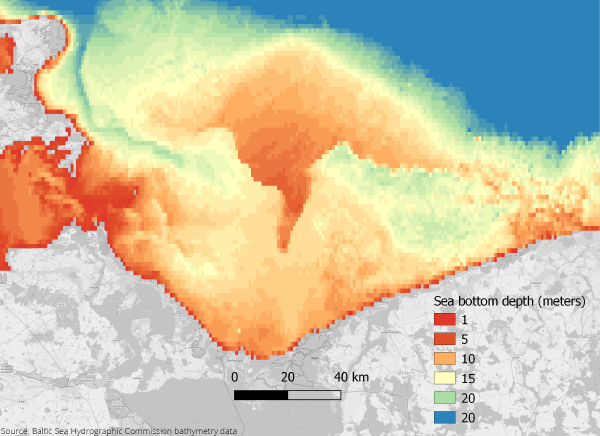
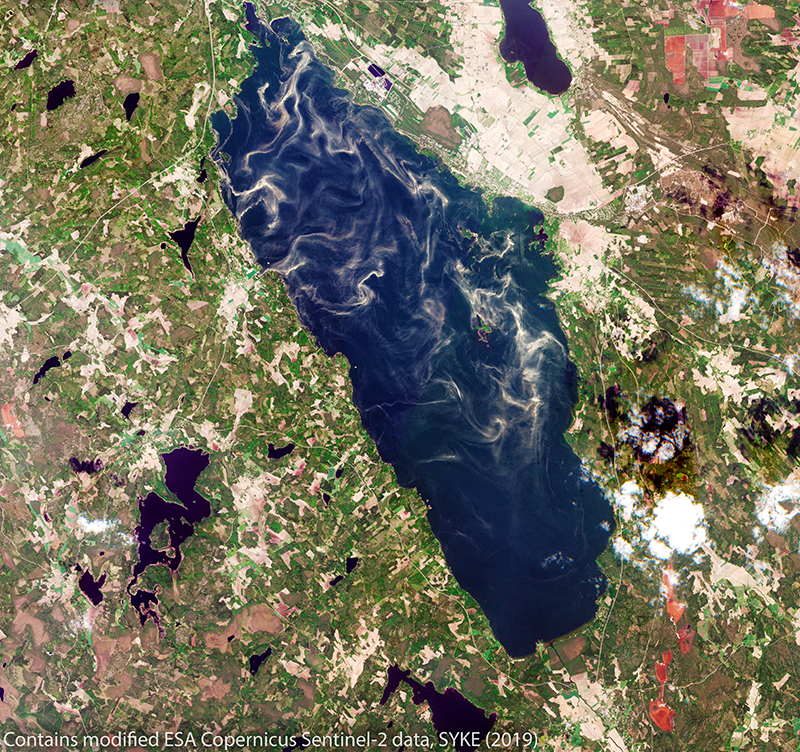
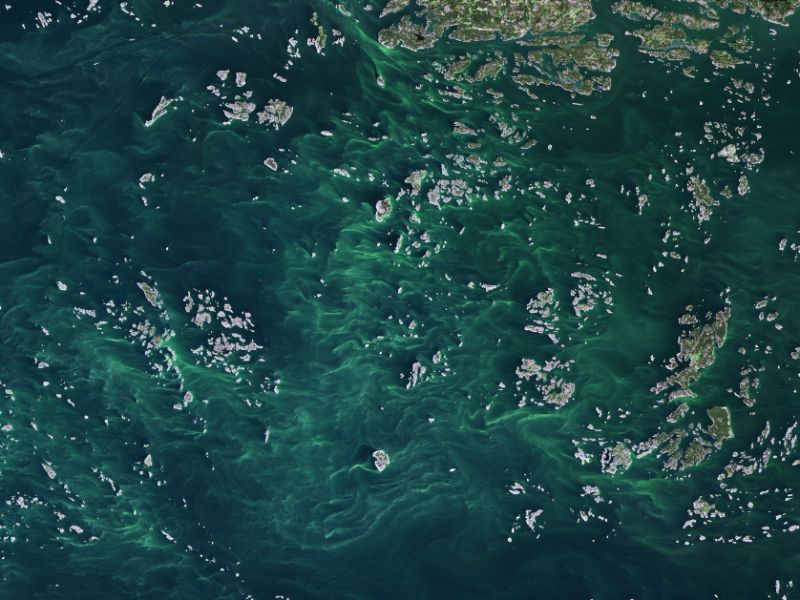
Resuspension on the west coast
Resuspension is a phenomenon where strong winds and waves lift substances from the seabed, such as gyttja, silt, and clay, even sand. These substances rise to the upper water layers and appear in satellite images as a greenish-brown ‘zone’ along the coast. Within a few days, the substances settle back to the bottom, and the water recovers its clarity.
Resuspension is common in the Bothnian Sea, on the western coast of Finland, in the inner archipelago, and especially around the Oulu region in the Bothnian Bay.
